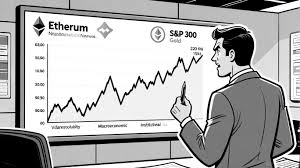Ethereum’s price is influenced by a range of dynamic factors that go beyond basic supply and demand. Key technical indicators, such as resistance and support levels, trading volume, and moving averages, play a central role in shaping short-term price movements. However, Ethereum’s real value driver lies in its robust ecosystem activity.
High usage of decentralized applications (dApps), increased transaction volumes, and rising gas fees typically signal network strength, which can contribute to bullish price momentum. Major protocol upgrades like The Merge, which transitioned Ethereum to a proof-of-stake model, further enhance long-term investor confidence and impact market valuation.
Staking activity has become another crucial element, as higher ETH staking reduces circulating supply, potentially creating upward price pressure. Market sentiment—driven by news, social media trends, and institutional interest—also affects price volatility.
On a broader level, macroeconomic conditions such as inflation, interest rates, and monetary policy changes now exert increasing influence over Ethereum’s value. As crypto becomes more interconnected with traditional finance, ETH’s performance often mirrors global economic shifts.
Understanding this blend of technical, fundamental, and macroeconomic factors is essential for investors looking to navigate Ethereum’s evolving price landscape.
#EthereumPrice
#ETHMarket
#EthereumStaking
#TheMerge
#CryptoMarket
#BlockchainUpgrades
#EthereumNetwork
#CryptoSentiment
#Macroeconomics
#InflationImpact
#InterestRates
#DeFi
#CryptoNews
#EthereumTransactions
#dApps








